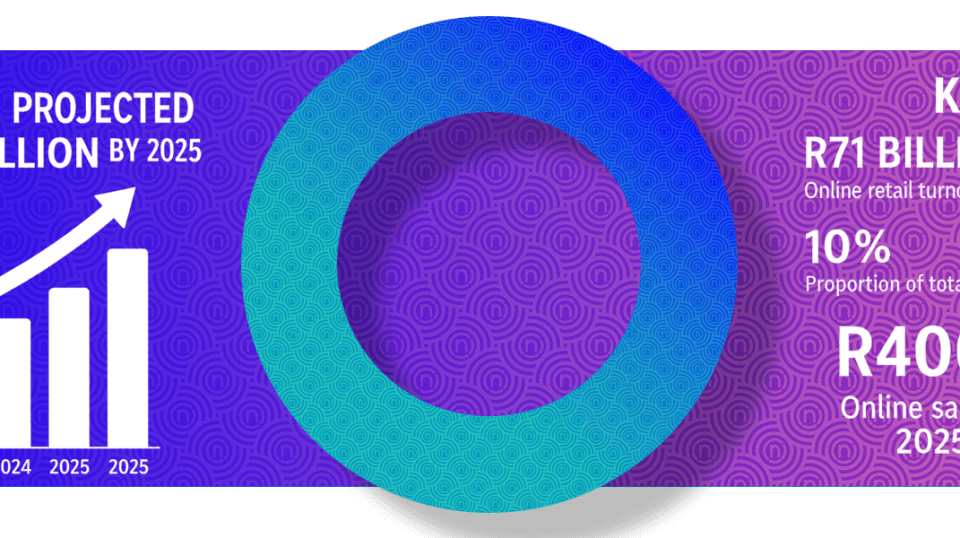
Digital payments processing | Online payments made easy
April 8, 2024
Understanding the importance of risk reports for businesses
June 19, 2024As more and more merchants and consumers turn to eCommerce and online shopping, the need for digital payment services naturally increases. Being up to speed with new methods of payment helps your business evolve to be competitive and profitable in today’s ever-growing marketplace.
This is where good knowledge about digital payment solutions comes in handy. It’s an excellent benefit to any eCommerce store that wants to increase customer experience and draw more online consumers while boosting profit.
If you’re running an eCommerce business, keeping up with all the latest digital payment trends, methods, and how to use them can be overwhelming. This guide will cover everything you need to know about using digital payment solutions, methods, and platforms in South Africa.

What are digital payment services? | An in-depth look
If you’re new to eCommerce, you’re probably wondering what digital payment services are. Also known as electronic payment services, it’s a way of accepting payments securely online through a payment gateway.
Now, that is just the basic premise, but it involves different payment methods, aggregators, providers, and trends. We’ll cover these in more detail throughout this guide.
Types of Digital Payment Methods in South Africa:
Electronic payments encapsulate any method that allows two parties to transfer money as digital currency via digital payment technologies. Below are the types of digital payments you can distinguish:
- Electronic payments systems: Bank transfers and EFTs.
- Mobile payment applications: Netcash, PayPal, Paygate, Peach Payments, etc.
- Digital wallets/e-wallets: Google Pay, Apple Pay, SnapScan, Zapper, etc. These digital wallets are gaining traction across South Africa, offering secure, contactless payment options.
- Digital cards: Credit, debit, and prepaid cards.
- Contactless Payments: Using near-field communication, card-holders can tap their cards instead of swiping to make instant payments at physical stores and without entering a PIN.
- Peer-to-peer digital payments: Payments that are made through payment gateways to link customers directly to a merchant’s bank account. P2P payments allow you to send money to someone’s account while still keeping their account details private. PayShap is a good example of this method, as you simply use a mobile number to send or receive money without needing to provide banking details via your mobile banking app.
- Payment links: These work by sending your customers a unique link that takes them to a secure payment portal.
Here’s a look at monetary payment methods that do not count as digital:
- Point-of-sale transactions (like card machines at till points)
- Cash transactions
READY TO UNLOCK A WORLD OF SECURE, CONVENIENT PAYMENT OPTIONS FOR YOUR CUSTOMERS?
How digital payment platforms work
Digital payment platforms allow businesses to accept secure online transactions through a network of banks and gateways. Digital payments consist of several mediators that work together to facilitate successful online transactions. For this to work, three parties need to be involved, namely, the consumer, the merchant, and the payment network.
The payment network connects to the consumer’s bank account (the issuer) and the merchant’s account (the acquirer). For the transaction to go through, the customer/payer would need to have an account with a financial institution with enough funds to make a purchase. At the same time, the merchant should have an account set up and ready to receive said funds.
To further put this into perspective, the digital payment process starts after a card is swiped or its details are filled in while shopping online. The payment information is then sent to the customer’s bank via a payment gateway. This will ensure the customer is who they say they are by going through security measures and confirm they have enough funds to complete the payment.

What makes digital payments secure?
These include:
- Two-factor authentication (2FA) – This is a security system that requires two distinct forms of identification to authorise and process an online payment. For example, a mobile two-factor authentication involves sending the payer an SMS with a security code (often called an “OTP” – One-Time-Password) to their mobile number. The payer will then enter this code into the eCommerce platform to authorise the payment.
- Training employees with the latest security practices – Making sure your employees are up to date with the latest best security practices can help protect your online business from hackers. The reason for this is that hackers often take advantage of unsuspecting employees to gain access to critical information like credit card details.
- PCI DSS compliance – Payment Card Industry Data Security Standard, or simply PCI, is the standard against which Payment Applications have been tested, assessed, and validated. Any merchant who accepts or processes card payments needs to adhere to the set of policies and procedures that protect debit, credit, and other card transactions.
- Tokenising customer card data – Tokenisation is a secure method of payment data encryption that ensures credit card information gets converted to a series of randomly generated numerals. These tokens have no inherent value.

Common digital payment risks
While the above security measures can help you accept electronic payments safely, you still need to be aware of some risks associated with accepting them. Here are the most common security risks to look out for:
Malware
Malware is software that is intentionally designed to cause disruption to electronic devices, leak sensitive information, and access information or systems. This can occur the moment users download apps, attachments, or files.
The storage of cardholder information on eCommerce platforms can be subjected to a malware attack since many businesses are now processing payments electronically.
Phishing scams
This is a type of online scam that targets consumers by sending them an email that appears to be from a trustworthy source. Scammers can try to replicate your business emails to trick your customers into sharing their card details with them.
Third-party risks
Many companies are opting to work with third-party facilitators to accept payments more efficiently and reduce costs. These vendors can include payment processors and gateways. The risks arise when insufficient third-party security controls cause their data to be exposed across multiple devices and applications.

Benefits vs. drawbacks of digital payment services
Let’s have a look at the benefits and drawbacks of using digital payment:
Benefits
- It’s convenient – Online payments for goods and services can be done any time of day and from any part of the world. This means people won’t have to worry about walking around with a lot of cash and possibly being robbed. It’s also convenient for business owners who want to sell goods without renting a physical building to set up a store.
- Speedy transactions – Digital payments save the seller and buyers time. No more waiting in line and handling cash – with online payments, transactions can be cleared almost instantly.
- Expanding your audience globally – One of the biggest benefits of digital payment solutions is how businesses can expand globally, increasing audiences and sales.
- You can offer a variety of payment methods – From credit cards to instant EFT payments, you’ll be able to offer your customers a wide variety of options. This will also help with your eCommerce platform’s customer experience since many have their preferences.
- Increase distribution channels – Accepting online payments opens up many doors for you in the digital space. For example, you can display your products or services via affiliate marketing on various websites or social media applications. The possibilities become endless since customers can quickly purchase your products after clicking a link to your online store.
- Easy to manage – Thanks to digital payments, managing and storing your profits and financial data becomes easier. How? Many digital payment providers like Netcash offer free accounts to securely manage your funds from, in addition to integrating with traditional account software packages.
- Recurring payments are possible – Recurring payments are when customers authorise merchants to withdraw funds from their accounts automatically and at regular intervals, like with subscriptions. This means that people don’t have to remember to make payments or travel to a physical store, making life easier for sellers and customers.
Digital payment services are ideal for businesses that want to streamline operations, reach more customers online, and reduce reliance on physical cash. As mobile and contactless payments grow, choosing the right platform is crucial for long-term success.
ENABLE CUSTOMER PAYMENTS BY MEANS OF SUBSCRIPTION BILLING
Drawbacks
- Fraud and cybercriminals – As more people opt for electronic payments, scams, fraud, and cybercriminals will naturally increase. Phishing emails, identity theft, and stolen data are all possible thanks to weaknesses in the digital payment industry. Also, many businesses are forced to install the latest payment security software, which is costly.
- Technical issues – Digital payment services are just like any other software relying on technology. So, these services are just as likely to face technical failures or downtime. When this happens, the problem can take hours to get fixed, which disrupts and frustrates online shoppers.
- Service fees – Many online payment gateways demand start-up costs or transaction and processing fees for customers using these facilities. Other services, such as cart fees or cybersecurity, can easily lead to incurring extra costs.

Types of digital payment solutions used in South Africa
If you’re wondering what digital payment service you can use for your business, why not consider the most common types in South Africa?
Payment requests/links
Payment links are a URL, QR code, or button that customers click on to take them directly to a checkout page to complete a purchase. These links are accessed via web browsers, emails, social media, or WhatsApp.
Subscriptions
Subscription billing or recurring payments are repeated transactions scheduled to occur regularly. These are processed by setting up recurring payment software. Then, your customers should be able to choose a schedule, payment plan, and payment method (credit or debit card) that suits them.
COLLECT RECURRING REVENUE WITH OUR SUBSCRIPTION BILLING SOLUTION
Part payments
A part payment (also known as a split payment) is when a customer opts for two or more payment methods to complete a transaction. For example, a customer can use two different credit cards to settle the total cost of a transaction.
Billing/invoicing
A billing payment is when a customer pays a business after the services or purchased goods are fulfilled. The customer will be invoiced, and payment methods are provided via entering banking details or by clicking a link to an online payment gateway. This can be completed with common payment methods such as credit and debit cards, online payments, and bank EFTs.
Scan to Pay
Scan to Pay involves QR codes to allow merchants to safely and efficiently make contactless transactions. These can be made using the scan-to-pay functionality in banking apps, or QR specific payment apps like SnapScan or Zapper.
Payment gateway
Payment gateways like Netcash Pay Now are the middleman between merchants and customers. Using front-end technology, it reads and authorises card information and provides multiple payment methods. to make an online payment.

Aggregators vs. single-offering payment providers
When choosing a digital payment provider, you can either opt for aggregators or single-offering payment providers.
So, which one is more suited for your business?
Choosing between these two depends on the specific needs of your business, as several factors come into play. These include fees and pricing models, business size, underwriting process, and value-added services.
Aggregators
A payment aggregator or facilitator is a service provider that registers merchants to accept credit cards and online transactions without an individual bank account. Examples include Netcash, PayFast, and PayU.
Pros
- Typically charge a flat fee per transaction.
- Offers value-added services.
- Offers flexible pricing.
- Eliminates the need to set up individual payment gateways for every payment method.
- Generally associated with trusted payment brands like Mastercard or Visa.
- Supports multiple currencies (where foreign cards are 3D-secured) and payment methods, enabling businesses to expand globally.
Cons
- There’s a higher risk of suspension for businesses relying on online payments.
- Associated fees like transaction, subscription, and chargeback fees can add up quickly.
- Payment aggregators handle sensitive financial and personal information, making them targets for cyber attacks.
- South African payment providers can only transact in Rands, so while you can accept foreign cards, you won’t be able to do business in forex.

Single-offering payments
Single-offering payment facilitators are third-party platforms that allow merchants to accept online payments. Examples include PayFlex, Mobicred, Snapscan, and Zapper.
Pros
- Offers value-added services.
- Provides customer support.
- Enhanced security thanks to fraud prevention and risk management tools.
- Access to detailed insights and analytics.
Cons
- Offers volume-based pricing that can be more expensive.
- Not for high-risk businesses due to rigorous underwriting processes.
- Less flexibility in merchant account setup and customisation.
Benefits of choosing an aggregator over signing up with different providers
For starters, the transaction fees associated with aggregators are often lower than payment facilitators. Thus making it a lower-cost option for start-ups/small businesses. It’s also better if you want a simplified processing experience, whereas facilitators are a better fit for large businesses with complex payment processing needs.
Payment aggregators enable all payment methods, e-wallets, digital payments, subscriptions, and Bank EFTs. This allows you to trade in eCommerce and physical retail spaces and access digital permanent methods such as payment requests/QR codes.
How to use digital payment services for your business
If you’re convinced to start using digital services but not sure where to begin. You can start by determining whether you prefer plug-ins or API integration to accept online payments.
ONE GATEWAY, MULTIPLE OPTIONS: OFFER THE PAYMENTS METHODS YOUR CUSTOMERS LOVE
Plug-in/App
A payment app or plug-in is an add-on to an existing eCommerce site that facilitates electronic transactions. This allows your customers to pay on your website. These are typically available from provider websites or in eCommerce platform app/plugin marketplaces. Examples of payment apps include Netcash, Payfast, Peach, and PayPal.
Here’s how you can add payment processing to your website:
- Find out if your website host is compatible with payment gateways.
- Choose the right payment gateway.
- Sign up for a merchant account and services.
- Link your merchant account to the payment gateway.
- Add your preferred payment gateway to your store.
- Test to see if everything is working smoothly.

API integration
An application programming interface allows two or more applications or systems to communicate (exchange data) with each other. For payment API, this means integrating a payment solution with an existing application, such as connecting the checkout function of a store to a payment system.
Here are some of the best eCommerce APIs to consider:
- Payment Gateway APIs: deals with purchases and payment processing.
- Third-party eCommerce websites: enable you to sell products in other marketplaces.
- CRM APIs: this integration manages customer interactions with your brand.
- eCommerce platform APIs: makes your eCommerce data visible to other services and apps.
South Africa’s landscape of digital payments
With a growing population and increasing reliance on the internet, South Africa’s landscape of digital payments also had to transform and evolve with the times. S.A. is actually quite evolved in the financial and payments sector compared to many other countries – including the U.S.
Common digital payment platforms in South Africa include Netcash, PayFast, Yoco, SnapScan, and Peach Payments.

Current value and growth of digital payments in South Africa
The total transaction value in South Africa for the digital payments market was projected to reach R324.09bn (US$17.22bn) in 2023. This value is expected to continue to increase at an annual growth rate of 12.88% by 2027, leading to an estimated total of R526.32bn (US$27.96bn).
The digital payments industry consists of three markets: Digital Commerce, Mobile PoS payments, and Digital Remittances. Digital commerce is the largest market currently in South Africa, which was projected to reach a value of R236.77bn (US$12.58bn) in 2023.
SIMPLIFY YOUR CHECKOUT: OFFER MULTIPLE PAYMENT OPTIONS TODAY!
The shift to digital payment systems in South Africa
Historically, South Africa has always had a strong reliance on cash as its primary payment method. While this is still the case for most South Africans, especially within rural areas and townships, the steady growth of digital payments continues to skyrocket.
This promising transition is thanks to the rapid development of infrastructure, eCommerce, and mobile money advancements, among other factors. South Africa’s well-established banking sector has also played an essential role in the digital payments system.
About 84.11% of the population has a bank account, according to the World Bank. Plus, major banks such as Standard Bank or Capitec are offering a wide range of financial products and services. This opens up opportunities for more consumers to conduct safe and straightforward online transactions.

Do South Africans trust digital payments?
Many South Africans are still finding it hard to trust online shopping. A staggering 44% of the population expressed concerns about the security of their personal and financial information when purchasing goods online – according to a recent poll by KLA’s YourView tool.
However, there are many signs of an increased number of online shoppers. Roughly 27 million eCommerce users were registered in the country in 2022. In 2027, however, this will increase to about 37.9 million users. So, in just five years, the number of online shoppers is projected to increase by 10 million in South Africa.
Digital payment solutions trends to look out for in 2024
Here’s a look at some of the latest digital payment trends taking the world by storm:
- Cashless transactions – Going cashless is the way forward. The risk of walking around with huge amounts of cash outweighs that of cards and eCommerce transactions. Cashless transactions will increase significantly in the coming years, and businesses need to hop on this trend if they haven’t already.
- Digital wallets – Mobile wallets are convenient, secure, and contactless. These are excellent for in-person and eCommerce transactions, and more people are opting for this payment method.
- Tap-to-pay – The days of swiping your credit card are likely coming to an end. Tapping with a contactless credit card typically processes faster than inserting a chip. Contactless cards will also incur less wear and tear and are processed with end-to-end encryption, making them more secure.

Latest digital payment technologies booming in South Africa
- Peer-to-peer payments – This payment solution is transforming the way people exchange money among family, friends, and colleagues. Globally, platforms like Venmo, Cash App, Zelle, or Stax have taken off, making it easy to split bills, send instant money, or repay debts. South Africa is steadily catching up with its own equivalent P2P apps like SnapScan, PayShap, Cashloop, Capitec Send Cash, and FNB Wallet.
- Instant payments – Things are happening faster every day, and as a result, many South Africans are looking for ways to make instant payments. With apps like PayShap, people can now pay and be paid instantly and directly from their business account for amounts up to R3000.00.
- Buy Now Pay Later – Don’t have all the money to pay for something right now? You can get your hands on higher-value goods today and always pay later. This is why the BNPL method is quickly becoming popular in South Africa, with excellent platforms like Pay Just Now, PayFlex, and Mobicred taking over the online shopping industry.
While apps like Zelle, Venmo, and Cash App dominate internationally, platforms such as PayShap, SnapScan, and Capitec Send Cash are South Africa’s homegrown alternatives.

Digital payment technology and solutions wrapped up
There you have it! Everything you need to know about digital payment services so that you can start implementing them into your business – if you haven’t already. If you want to grow financially, be more organised, and be able to accept online payments in multiple ways, then you are the perfect candidate for digital payment services.
Frequently Asked Questions
Read Next: Digital Payment Processors
SPEAK TO A PAYMENTS ADVISOR TODAY ABOUT PAY NOW GATEWAY FOR YOUR ECOMMERNCE STORE.
Brent isn’t just a payments guy, he’s your payments ally. With a background in banking and experience navigating the world of payments, he’s passionate about connecting businesses with the right tools to scale and secure their online success. Charming and confident, Brent makes the complex world of e-commerce payments clear and conquerable. He’ll help you unlock the power of secure and scalable solutions, ensuring your business is ready to thrive online.




